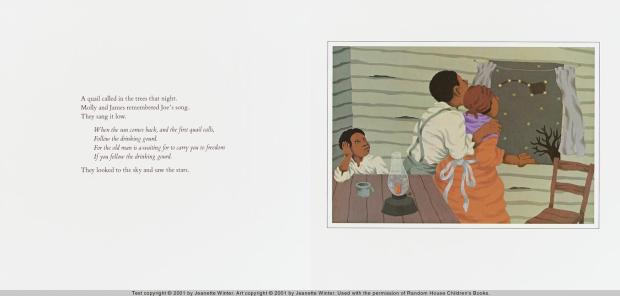
Image Credit: Lee & Low Books Inc., Gwendolyn Hooks/Colin Bootman
Historical dramas like Hidden Figures have me thinking about all the stories of black excellence I don’t know about; stories that we’ve yet to discover and celebrate. Though I was fortunate to grow up with a decent education on Black History, there’s always more to learn.
In Tiny Stitches, Gwendolyn Hooks tells the story of the incredibly gifted Vivien Thomas. We meet Vivien as he’s examining the tiny needles he designed. The needles are for an operation he invented but wouldn’t get credit for for twenty-six years, all because of the color of his skin. As a teenager, Vivien worked as a researcher at the all white Vanderbilt University for Dr. Alfred Blalock. He absorbed everything very quickly, but when he learned that his official job was “janitor” (and that he made less than his white counterparts) he refused to work until that changed.
When given the chance, Vivien moved his family to Baltimore, Maryland to assist Dr. Blalock at John Hopkins University. Even though he faced more discrimination and segregation there than in his home of Nashville, Tennessee, he thrived. When presented with the challenge of how to treat “blue babies” he excelled. Though he got no credit for his procedure until he was much older, he became a respected technician, always eager to share and teach his knowledge. Vivien Thomas pioneered open heart surgery on children and his compassion, intelligence and bravery has saved countless lives.
Hooks does a great job chronicling Thomas’ life & explaining medical procedures clearly for children to understand. She also includes interesting back matter about “blue babies” and more information about Thomas. Bootman’s use of cool colors gives the story a calm feeling; Thomas seemed to be a calm and collected person and the watercolor illustrations reflect that.
This is a really nice addition to non-fiction picture books for children and even better, it’s about a black man! It very deservedly just won a 2017 NAACP Image Award for Outstanding Literary Work for Children. If you have a child who is interested in the body, medicine and stories of perseverance, check out this book!
Recommended for: 3rd Grade and up
Great for: History, Medicine, Pioneers, Perseverance, Determination, Discrimination, Segregation, Black History Month, African American, Dreams, Role Model, Non-Fiction, Science
Book Info: Tiny Stitches: The Life of Medical Pioneer Vivien Thomas by Gwendolyn Hooks/Illustrated by Colin Bootman, 2017 Lee & Low Books Inc., ISBN: 9781620141564
















